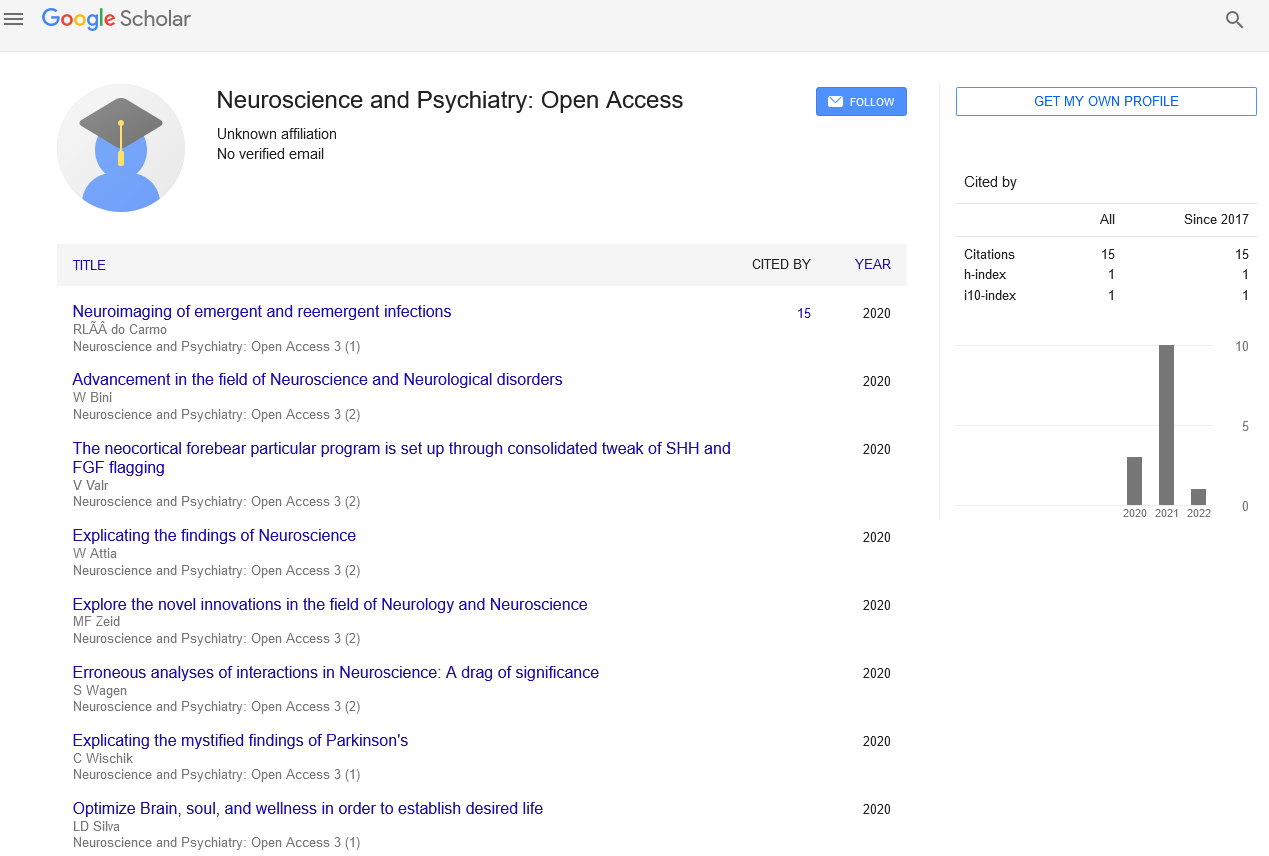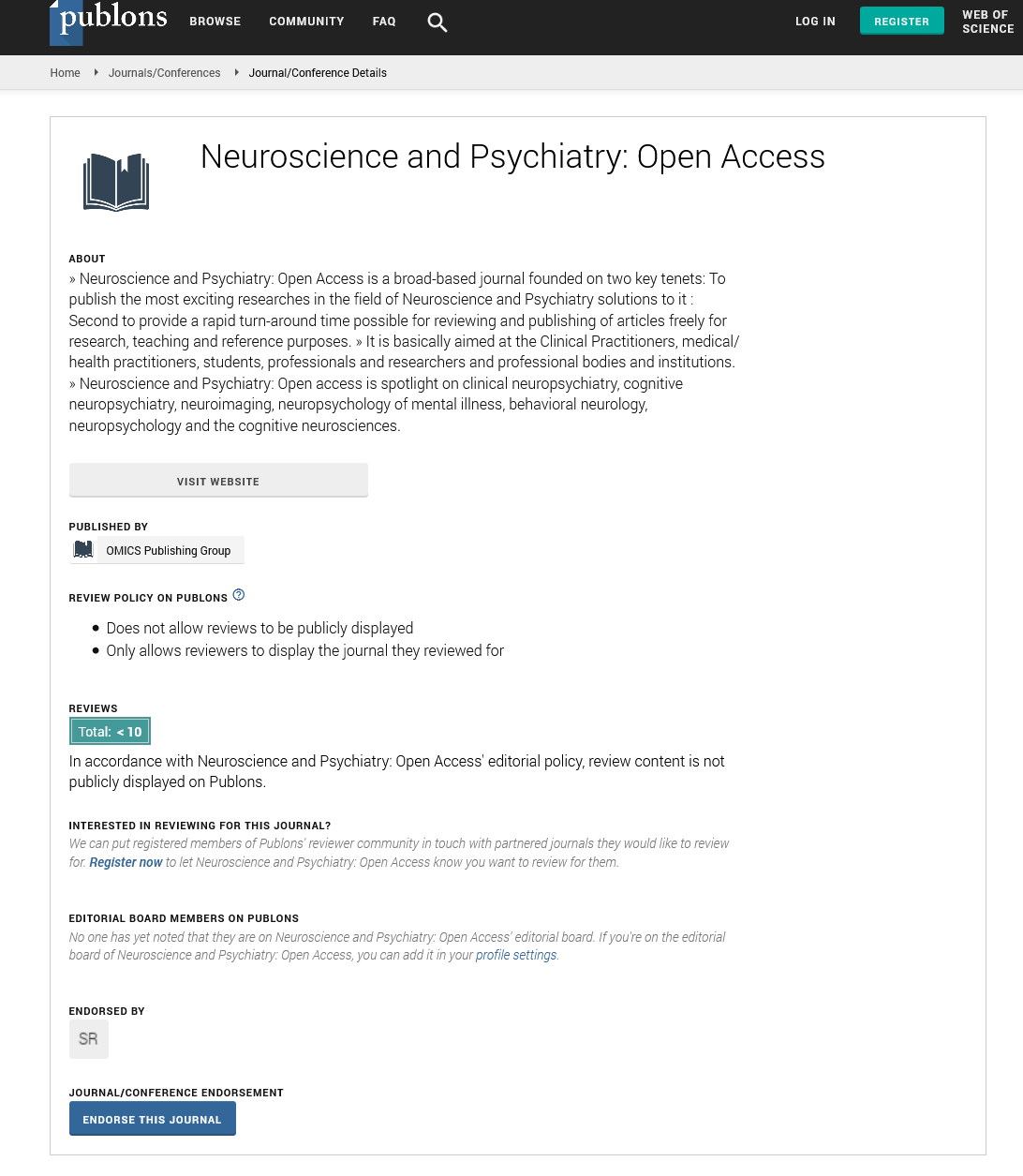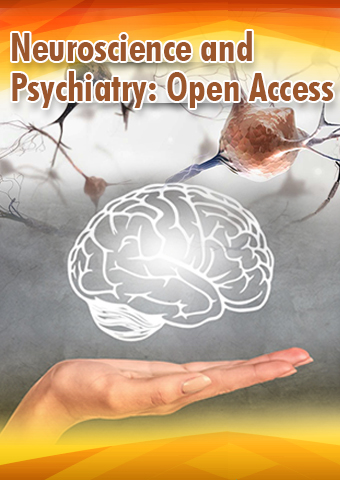Editorial - Neuroscience and Psychiatry: Open Access (2023) Volume 6, Issue 4
Synapses: The Complex World: Revealing the Secrets of Neuronal Communication
Shahzad Kumar*
University of Punjab, Department of Clinical neuroscience, India
University of Punjab, Department of Clinical neuroscience, India
E-mail: shahzadkumar@gmail.com
Received: 01-08-2023, Manuscript No. npoa-23-109718; Editor assigned: 04-08-2023, Pre QC No. npoa-23- 109718; Reviewed: 18-08-2023, QC No. npoa-23-109718; Revised: 25-08-2023, Manuscript No. npoa-23- 109718 (R); Published: 31-08-2023, DOI: 10.37532/npoa.2023.6(4).83-85
Abstract
Synapses enable the transmission and regulation of impulses between neurons, serving as the basic building blocks of communication within the complex network of the brain. Understanding these factors' structure, function, and relevance in neural communication is crucial to comprehending the complexity of the brain. This page offers a thorough investigation of synapses, beginning with their anatomy and synaptic transmission mechanisms. Examining the delicate equilibrium between excitatory and inhibitory synapses highlights how important these synapses are for processing information. Discussed is the idea of synaptic plasticity, which is the basis for learning and memory. This notion highlights the astonishing capacity of synapses to modify and alter their potency through time. It sheds light on the various roles and neuromodulatory capabilities of the neurotransmitters involved in synaptic communication. The article goes into greater detail regarding the significance of synaptic failure in neurological and psychiatric illnesses, illuminating the complex connection between synapses and ailments including Alzheimer's disease, Parkinson's disease, schizophrenia, and autism spectrum disorders. Finally, the methods and approaches used to research synapses are covered, including electrophysiological recordings and sophisticated imaging techniques. Researchers gather invaluable knowledge on the functioning of the brain and pave the way for cutting-edge therapy approaches for neurological and psychiatric diseases by unlocking the secrets of synapses. This article offers readers a thorough introduction of the intricate world of synapses and invites them to take an engrossing journey into the world of neural communication.
Keywords
Synapses • Neuronal communication • Neurotransmission • Excitatory synapses • Inhibitory synapses • Synaptic plasticity • Learning and memory • Neurotransmitters • Synaptic dysfunction • Neurological disorders • Psychiatric disorders • Alzheimer's disease • Parkinson's disease • Schizophrenia • Autism spectrum disorders • Imaging techniques • Electrophysiology • Neuronal networks • Brain function • Therapeutic strategies
Introduction
A massive network of communication exists within the complex structure of the human brain, where billions of neurons tirelessly analyse information, mould our ideas, and plan every action [1]. Synapses stand out as the crucial connections that allow for neural transmission at the core of this extraordinary system [2]. Synapses are crucial in determining how our perceptions, memories, and behaviours are shaped because of their capacity to send and modify signals [3]. Unravel the mysteries of the brain and advance our understanding of neuroscience by comprehending the complexities of synapses [4]. We take a fascinating journey into the world of synapses in this article, examining their structure, purpose, and importance for neural transmission [5]. We will delve into the principles of synaptic transmission, investigate the amazing morphology of synapses, and decipher the intricate dance between excitatory and inhibitory impulses [6]. By looking at synapses through the lens of synaptic plasticity, we will also investigate how these tiny junctions adapt to and affect our learning and memory processes. We'll also focus on neurotransmitters, the brain's chemical messengers, as we examine their function in synaptic communication [7]. We'll explore the wide range of neurotransmitters and their individual effects, from glutamate's basic excitatory action to the complex neuromodulatory roles played by dopamine and serotonin.
We will also discuss the effects of synaptic dysfunction since aberrant synapses play a role in a number of neurological and mental problems. We can learn a lot about prospective therapeutic approaches that target synapses by examining the relationship between synaptic dysregulation and illnesses including Alzheimer's disease, Parkinson's disease, schizophrenia, and autism spectrum disorders. We will investigate the methods and instruments used by researchers to examine synapses as we delve more into the realm of synapses [8]. Scientists can visualise and alter synapses using cutting-edge imaging techniques and electrophysiological recordings, which reveals their complexity and offers crucial hints for comprehending their function in brain function [9]. Neuroscience's fascinating and dynamic frontier is the world of synapses. We learn more about the inner workings of the brain by unlocking the mysteries of these minuscule junctions, and we also have the chance to make ground-breaking findings that could influence the direction of future neurological and psychiatric research [10]. Join us on this insightful adventure as we investigate the intricate world of synapses and attempt to solve the puzzles surrounding neural communication.
Synapse anatomy: Presynaptic terminals, synaptic clefts, and postsynaptic terminals make up synapses, which are situated at the intersections of two neurons. While the postsynaptic terminal has receptors that connect to these neurotransmitters, the presynaptic terminal has vesicles packed with neurotransmitters. The two terminals are separated by a small space called the synaptic cleft.
Synaptic transmission: Neurotransmitters are released into the synaptic cleft when an electrical signal, known as an action potential, reaches the presynaptic terminal. These neurotransmitters spread out across the cleft and attach to particular receptors on the postsynaptic terminal, setting off a chain of events that either stimulate or inhibit the postsynaptic neuron, affecting its firing pattern.
Neurotransmitters and synaptic diversity: Different neurotransmitters work as chemical messengers in synapses, with each having a unique purpose and set of outcomes. Examples include gamma-aminobutyric acid (GABA), the main inhibitory neurotransmitter, and glutamate, the main excitatory neurotransmitter. Other neurotransmitters that modulate brain activity and control mood, reward, and emotions include dopamine, serotonin, and norepinephrine.
Neurological disorders and synaptic dysfunction: Changes in synaptic function have a role in the emergence of a variety of neurological and psychiatric disorders. Examples include Alzheimer's disease, Parkinson's disease, schizophrenia, and autism spectrum disorders, which have all been linked to anomalies in synaptic transmission. Understanding synaptic dysfunction offers important new perspectives on the underlying causes and potential therapeutic strategies for these conditions.
Excitatory and inhibitory synapses: Synapses can be classed as either excitatory or inhibitory depending on how they affect the postsynaptic neuron. Action potential creation is facilitated by excitatory synapses, whereas action potential firing is inhibited by inhibitory synapses. Maintaining appropriate neural activity and information processing requires a balance between excitatory and inhibitory inputs.
Synaptic plasticity: The capacity of synapses to alter their potency and strength over time is referred to as synaptic plasticity. Both learning and memory are based on two crucial types of synaptic plasticity: long-term potentiation (LTP) and long-term depression (LTD). Synaptic connections are made stronger by LTP while weaker by LTD, enabling the brain to adapt to new events and enhance memories.
Conclusion
Synapses are at the forefront of our understanding of neural transmission because they are the complex brain communication bridges. Synapses shape our ideas, behaviours, and memories through their structure, function, and plasticity. We have taken a fascinating journey into the intricate world of synapses in this post, learning their mysteries and illuminating their importance in neuroscience. Understanding how synapses are divided into presynaptic terminals, synaptic clefts, and postsynaptic terminals allowed us to better grasp the architecture of synapses. The processes of synaptic transmission demonstrated how the release and binding of neurotransmitters convert electrical signals into chemical signals. We saw the delicate balance between excitatory and inhibitory synapses and understood how important it is for processing information and preserving brain homeostasis. With the ability to adapt, become stronger, or get weaker with time, synapses became a fascinating phenomena known as synaptic plasticity. The building blocks of learning and memory are long-term potentiation (LTP) and long-term depression (LTD), which provide the brain the extraordinary capacity to change in response to experiences and encode knowledge. The wide variety of neurotransmitters revealed their complex synaptic communication functions. Neurotransmitters shape the intricate neuronal landscape and control mood, reward, and emotions. They perform everything from the basic excitatory acts of glutamate to the neuromodulatory actions of dopamine and serotonin. We also explored how synaptic disruption affects neurological and mental illnesses. Conditions including Alzheimer's disease, Parkinson's disease, schizophrenia, and autism spectrum disorders are all caused by abnormal synapses. We gain important insights into prospective therapy approaches aimed at regaining synaptic function by elucidating the complex link between synapses and various illnesses. During our investigation, we learned about the instruments and methods that scientists use to examine synapses.
References
- Herrup K, Yang Y. Cell cycle regulation in the postmitotic neuron: oxymoron or new biology?. Neuroscience. 8, 368-78 (2007).
- Brunk UT, Terman A. Lipofuscin: mechanisms of age-related accumulation and influence on cell function. Free Radic Biol Med. 33, 611-9 (2002).
- Gerber U. Metabotropic glutamate receptors in vertebrate retina. Documenta Ophthalmologica.106, 83-7 (2003).
- Drachman DA. Do we have brain to spare?. Neurology. 64, 2004-5 (2005).
- Levitan, Kaczmarek, Leonard K et al. Electrical Signaling in Neurons. The Neuron.41-62 (2015).
- Brown EN, Kass RE, Mitra PP. Multiple neural spike train data analysis: state-of-the-art and future challenges. Nat Neurosci. 7, 456-61 (2004).
- Yiu G, He Z. Glial inhibition of CNS axon regeneration. Neuroscience. 7, 617-27 (2006).
- Wang Z, Tang B, He Y et al. DNA methylation dynamics in neurogenesis. Epigenomics. 8,401-14 (2016).
- Mehta AR, Mehta PR, Anderson SP et al. Grey Matter Etymology and the neuron. Brain. 143,374-379 (2020).
- Gouwens NW, Wilson RI. Signal propagation in Drosophila central neurons. J Neurosci. 29, 6239-6249 (2009).
Indexed at, Google Scholar, Crossref
Indexed at, Google Scholar, Crossref
Indexed at, Google Scholar, Crossref
Indexed at, Google Scholar, Crossref
Indexed at, Google Scholar, Crossref
Indexed at, Google Scholar, Crossref
Indexed at, Google Scholar, Crossref
Indexed at, Google Scholar, Crossref


